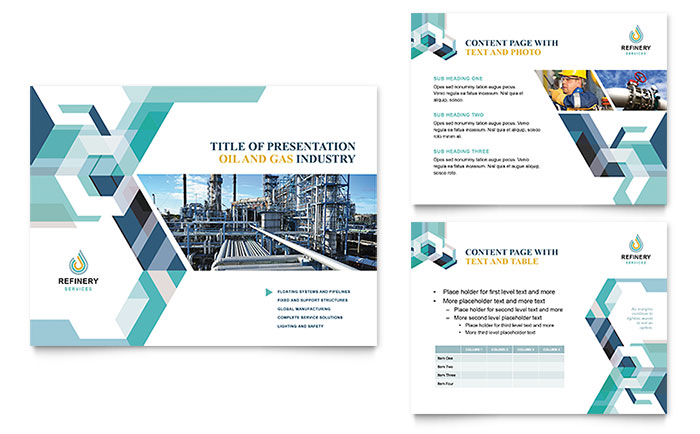- Fuel For Powerpoint Template
- Fuel Powerpoint Presentation
- Fuel For Power Plant
- Fuel For Power Generation
Presentations can be very important to you as a Manager. Whether you use Microsoft PowerPoint, Keynote for the Mac or an alternate program, your slides are a key element of your presentation.
You may be judged by how well you present and your performance will certainly impact whether you get approvals for your project, get your point across or influence your audience.
- Oil is a thick, liquid fossil fuel, it is formed from remains of small animals, algae and protists. Petroleum is another name for. The United States consumes about. Of all the oil produced in the world. Of the world’s supply is located in this country.
- The Fuel PowerPoint template in purple shows a gasoline fuel pump with a car driver filling his vehicle with fuel. The Fuel PowerPoint template not only illustrates fuel consumption but also the ever rising cost of fuel. The Fuel PowerPoint template is ideal for any energy, fossil fuel, energy prices, oil prices, fuel prices, fuel consumption.
There are many so-called 'rules of thumb' out there for developing presentation slides and it's tempting to simply follow them. Don't. (tweet this)
The problem is, they probably don't apply to what you are doing. The more important thing is to understand the principles of presenting and fit them to your own purpose. I'll talk more about that in a future blog. Some of my presentations have only images, others a mix of text and images, others more text. It really depends on the purpose.
Fuel For Powerpoint Template
In the mean time, here are a few of the 'rules of thumb' for developing presentations that I know about. They do not have to be followed exactly and in some cases, breaking the rule will be more effective.
“No more than 20 slides in your presentation”
PowerPoint slide on Fuel Cell Presentation compiled by AnytimeStudies. H 2-02 fuel cell Principle: The fuel is oxidized on o the anode and oxidant reduced on the cathode.
The number of slides is actually irrelevant. It’s the content, flow and pace that matters. You could have an hour-long presentation with a handful of slides where you talk for 10 minutes with each slide (Only do this if you can keep it engaging!), or a presentation with 60 slides with a single point on them and spend a minute or less on average with each slide. I personally prefer more slides, with only one point per slide, but I sat in on a seminar where the speaker was telling stories and engaging the audience so well, that he hardly had any slides. Relevancy is more important than number.
Fuel Powerpoint Presentation
“No more than five bullet points on each slide”
Generally speaking, the fewer bullet points the better, and in some cases, no bullet points at all. Sometimes, it's as simple as mixing it up to keep the audience's interest.
If the bullets are an important prompt for you to speak about specific points, have fewer on each slide but use more slides and keep the presentation interesting by grouping points (perhaps by theme) or even leaving out the bullet points and use a graphic that illustrates your point. Here, interest and relevancy trumps numbers.
If you are presenting a list of information you want the audience to read or if the presentation will be handed out for reference, you can introduce a slide with a long list of points or text, but not speak to the entire list like you are reading from it. Or you can add it to the notes section of your slide program and print and distribute them instead of including it on the slide. This is an easy to use feature of powerpoint.
When it comes to text, make sure it's readable from the back of the room, which will depend on the room size and the size of the projected slides. This practical consideration will limit the information you put on a slide. If space is an issue, put it on a handout instead. By getting creative, you could even have only one word on a slide along with an image to evoke a reaction and prompt you about what to talk about.
“No more than six words for each bullet point”
Fuel For Power Plant
Again, it depends on the purpose, but shorter is always better if you are using the bullets as speaking points. In that case, even a single word will do. Where possible, bullet points should prompt you to talk about the topic, not spell it out completely. Six words to a bullet point is sort of arbitrary, but you get the idea.
Where you need to present a point with more detail so the audience can read all of the information, put it on a slide as a paragraph, not a bullet point. Make sure the text is readable from the back of the room and use these kinds of slides sparingly. No one wants to sit through a presentation filled with slides that carry entire blocks of text, but at some point, it may be useful. If so, you can either say 'It's here so you don't have to take notes, so I'll read it to you now' or better yet, give them a minute to read it, then make your point.
“2-3 minutes per slide”
This rule is deceptive since its application is only appropriate when you structure your slides and delivery approach to accommodate a two-to-three minute per-slide focus.
What’s more important is that you create a good pace and keep the audience’s interest. You can spend five or 10 minutes on some slides, just make sure you keep their interest - discuss the issue, give examples and stories and solicit input and comment from the audience, etc. Similarly, you can spend 10 seconds on a slide that’s used to illustrate a key point or give impact to your presentation. Sometimes multiple slides are much better than using a transition on one slide where each bullet point drops in after the other.
The '10/20/30 Rule of Powerpoint'
This is where you should have only 10 slides, it should last only 20 minutes and you use text with a minimum 30 points.

It's sort of a combination of other presentation rules of thumb, and would be effective in a specific situation (high level business pitches, according to it's creator, Guy Kawasaki), but probably not your situation, so adapt it as needed.
The Only Rule of Thumb you need to know

Fuel For Power Generation
You are developing your PowerPoint presentation slides for a reason, so the ultimate 'rule' is to design your presentation to achieve your objectives. It may be to teach and inform, it may be to influence, or it may be to get a decision.
The principles from the above rules should be used, but not to box you in. Citrix phone app install. Dtc4500e firmware. Use the reasons behind some of the rules to develop your presentation, not so much the rigid rules themselves.
So much depends on the type of presentation, your audience, the topic and your objective. It’s more important to consider what your objective is and focus your powerpoint or keynote slides on meeting that objective than trying to fit your slides into a pre-defined mould, as long as what you do is effective. And how do you know it's effective? Lots of practice and paying close attention to what other presenters do that you feel are effective as an audience member.
And don't be shy to ask audience members for feedback. You can't improve if you don't know what needs to be improved.
About Michel Theriault
Michel is the founder of Success Fuel for Managers. He is an author, speaker and consultant focusing on topics relevant to Managers and aspiring Managers in businesses of all sizes who want to get results, get attention, and get ahead. He is also a contributor to Forbes and AllBusiness Experts . Michel is available for speaking engagements, training and consulting. Connect with him or send an email.
Other Articles of Interest:

|
Email this page to a FriendAbout 123PPT.comAdvertise on 123PPT.com PowerPoint Templates | PowerPoint Backgrounds | PowerPoint Video Backgrounds | Presentations Photos | PowerPoint Music | PowerPoint Sound Effects 123PPT.com is a part of 123OfficeMedia LLC. All content within this page remains the property of 123PPT.com. User Agreement & Terms of Use prohibit the reproduction, copying or other forms of republishing without written consent. © 2003 - 2020 123PPT.com. All rights reserved. Design: Impossible Media | ||||||||||||||||||||||||||||||||||||||||||||||||||||||||||||||||||||||||||||||||||||||||||||||||||||||||||||||||||||||
